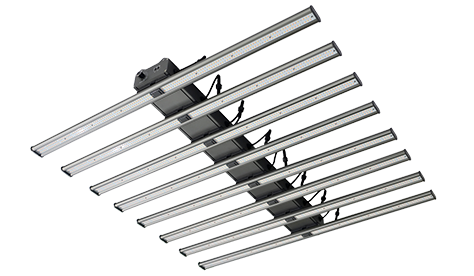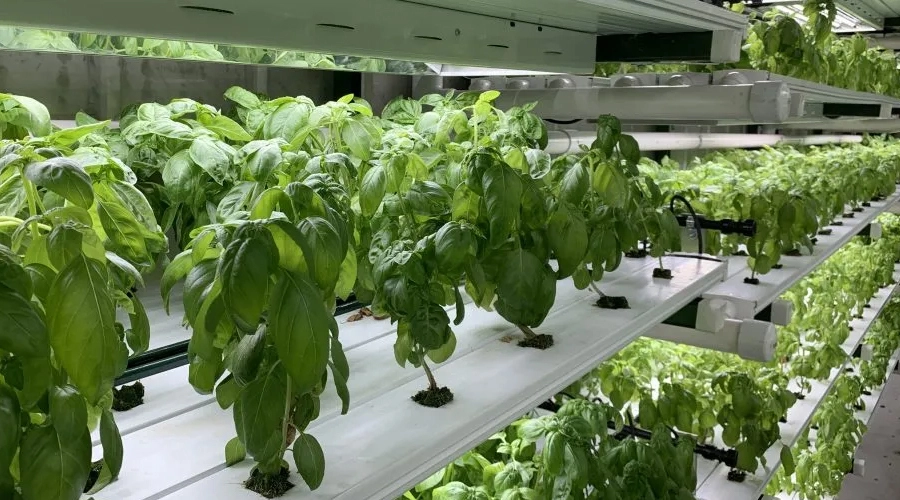¿Sabes cómo se cultivan las verduras y las frutas que comemos a diario? ¿Es a través de la agricultura tradicional o la hidroponía?
- Agricultura tradicional, con una historia de miles de años, es actualmente el método agrícola más frecuente del mundo.
- La hidroponía, desarrollada en las últimas décadas, implica el cultivo de plantas en un entorno sin tierra.
¿Cuáles son las diferencias entre la agricultura tradicional y la hidroponía? ¿Cuál es más adecuado para el futuro del desarrollo agrícola? Exploremos estas preguntas.
¿Cómo difiere la hidroponía de la agricultura tradicional?
Medio de crecimiento
Agricultura tradicional: el suelo sirve como medio de crecimiento en la agricultura tradicional, brindando apoyo a las plantas.
Hydroponics: la hidroponía elimina la necesidad de suelo, utilizando soluciones de nutrientes para suministrar nutrientes a las plantas. Se pueden utilizar varios materiales de soporte como perlita, vermiculita y espuma para soportar las raíces de las plantas.
Utilización del agua
Agricultura tradicional: el riego de cultivos en la agricultura tradicional se basa en la precipitación natural y artificial. El agua se puede perder mediante evaporación e infiltración.
Hydroponics: el agua en la hidroponía puede recircularse a través de procesos como la evaporación, la infiltración y la transpiración.
Producir
Agricultura tradicional: el crecimiento de las plantas en la agricultura tradicional está influenciado por el suelo y las condiciones climáticas, lo que resulta en rendimientos generalmente más bajos.
Hydroponics: la hidroponía puede proporcionar un amplio agua y nutrientes a las plantas, aumentando potencialmente los rendimientos de los cultivos.
Impacto ambiental
Agricultura tradicional: el uso de pesticidas y fertilizantes en la agricultura tradicional puede conducir a la contaminación del suelo y el agua.
Hydroponics: los sistemas hidropónicos a menudo dependen principalmente de soluciones de nutrientes, reduciendo el uso de fertilizantes.
Costo
Agricultura tradicional: la agricultura tradicional tiende a tener costos más bajos, ya que no requiere soluciones de nutrientes y equipos adicionales.
Hydroponics: la hidroponía es más costosa que la agricultura tradicional debido a las inversiones iniciales en soluciones y equipos de nutrientes.
Aplicabilidad
Agricultura tradicional: la agricultura tradicional requiere recursos de tierras al aire libre.
Hydroponics: la hidroponía puede adaptarse a varios entornos interiores y exteriores, incluidas áreas urbanas, desiertos y otras condiciones desafiantes.
¿Por qué la hidroponía es mejor que la agricultura tradicional?
Desafíos de la agricultura tradicional
Alto consumo de recursos. La agricultura tradicional requiere recursos hídricos significativos para el riego y el uso sustancial de los fertilizantes para mejorar los rendimientos. El consumo excesivo de estos recursos puede tener efectos ambientales adversos.
Problemas de degradación de la tierra. El uso de pesticidas y fertilizantes en la agricultura tradicional puede alterar la estructura del suelo. El cultivo prolongado y excesivo puede conducir a una disminución de la fertilidad del suelo e incluso contribuir a la desertificación.
Dependencia del clima natural. La agricultura tradicional depende en gran medida de las condiciones climáticas para la producción y la cosecha. Los desastres relacionados con el clima, como inundaciones, sequías, tifones, etc., pueden provocar rendimientos reducidos de cultivos o incluso una falla completa de cultivos
Análisis de la sostenibilidad de la agricultura moderna: hidroponía versus agricultura tradicional
Uso reducido de agua. La hidroponía puede reducir significativamente el consumo de agua, hasta en un 90% en comparación con el cultivo tradicional. Esto se logra mediante un monitoreo preciso del uso del agua y la circulación interna del agua dentro del sistema, minimizando los desechos y la evaporación.
Aumento de rendimientos. Las plantas en sistemas hidropónicos a menudo exhiben tasas de crecimiento más rápidas y mayores rendimientos por unidad de área. Esto se debe a que las raíces tienen acceso directo a soluciones de nutrientes controladas con precisión, eliminando la competencia y las limitaciones impuestas por las condiciones del suelo.
Disminución de los requisitos de la tierra. Los sistemas hidropónicos pueden operar en interiores, lo que permite el apilamiento vertical, lo que los hace muy adecuados para áreas urbanas o regiones con disponibilidad de tierras limitadas.
Control climático. Los entornos controlados, como los invernaderos, permiten la producción durante todo el año no afectada por las condiciones climáticas. Esto minimiza las pérdidas de cultivos debido a factores como infestaciones de escarcha o plagas.
Reducción laboral. La automatización y la tecnología en los sistemas hidropónicos pueden optimizar los procesos, reduciendo significativamente la necesidad de mano de obra manual en comparación con la agricultura tradicional.
Estudios de casos de agricultura hidropónica exitosas

China: JD Hydroponic Vegetable Factory
La fábrica de verduras Hydroponic JD está situada en Zhejiang, China. Establecida en 2018, esta granja hidropónica emplea técnicas hidropónicas avanzadas. La instalación cultiva varias verduras, como lechuga, tomates, pepinos y pimientos.
Estados Unidos: Aerofarms
Aerofarms es una granja hidropónica vertical ubicada en Newark, Nueva Jersey, EE. UU. Fundada en 2011, la granja cultiva una variedad de verduras, que incluyen lechuga, tomates, pepinos y pimientos.


Países Bajos: Tomatoworld
Tomatoworld se dedica al cultivo de tomates utilizando hidroponía avanzada y técnicas de agricultura sostenible. Es un centro educativo que muestra las últimas innovaciones en tecnología de invernadero, incluida la hidroponía, a los visitantes de todo el mundo.
Si está interesado en la agricultura hidropónica interior o el cultivo de invernadero a pequeña escala, explore nuestro Sistemas de jardín vertical interior. Ofrecemos máquinas de plantación de fábrica de plantas simuladas compactas y podemos personalizar los sistemas verticales a sus requisitos.
¿La hidroponía reemplazará la agricultura tradicional?
Muchas personas pueden preguntarse si la agricultura hidropónica es la tendencia futura. Creo que la agricultura hidropónica tiene ventajas, pero no puede reemplazar completamente la agricultura tradicional sin condiciones y tiempo específicos.
Si bien hemos tocado las ventajas de la agricultura hidropónica, también tiene algunos inconvenientes:
Altos costos. Los costos de inversión iniciales para la agricultura hidropónica son relativamente altos, lo que plantea un desafío para los productores a pequeña escala.
Altos requisitos técnicos. La agricultura hidropónica exige un alto nivel de experiencia técnica, que requiere conocimiento y experiencia especializados.
Aplicabilidad limitada. Actualmente, la agricultura hidropónica es principalmente adecuada para pequeños cultivos. Se espera que los avances en tecnología hidropónica generen avances en el cultivo de cultivos más grandes.
Teniendo en cuenta los factores mencionados anteriormente, creo que la tendencia futura de la agricultura hidropónica es la siguiente:
En regiones y sectores específicos, la agricultura hidropónica obtendrá ventajas y reemplazará gradualmente la agricultura tradicional. Los ejemplos incluyen áreas áridas, centros urbanos y mercados de alta gama.
La agricultura hidropónica se integrará con la agricultura tradicional, formando un nuevo modo de producción agrícola. La incorporación de la tecnología hidropónica en la agricultura tradicional puede mejorar los rendimientos, conservar recursos y reducir el impacto ambiental.
jayes
Como gerente de marketing digital en AUXGROW, Jayes combina la pasión por los sistemas hidropónicos y la experiencia en luces de cultivo LED. Con experiencia práctica y un profundo conocimiento, Jayes le guía a través del mundo del cultivo sostenible.






